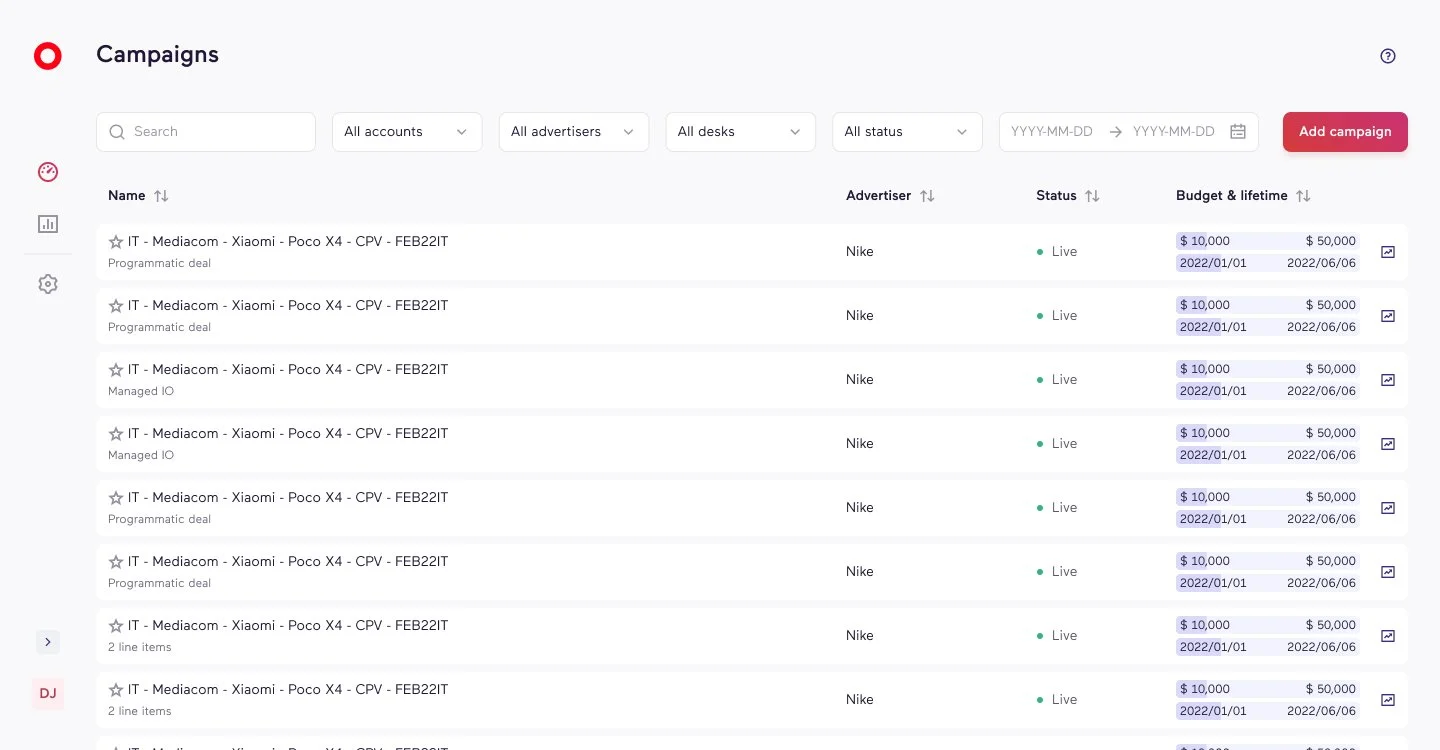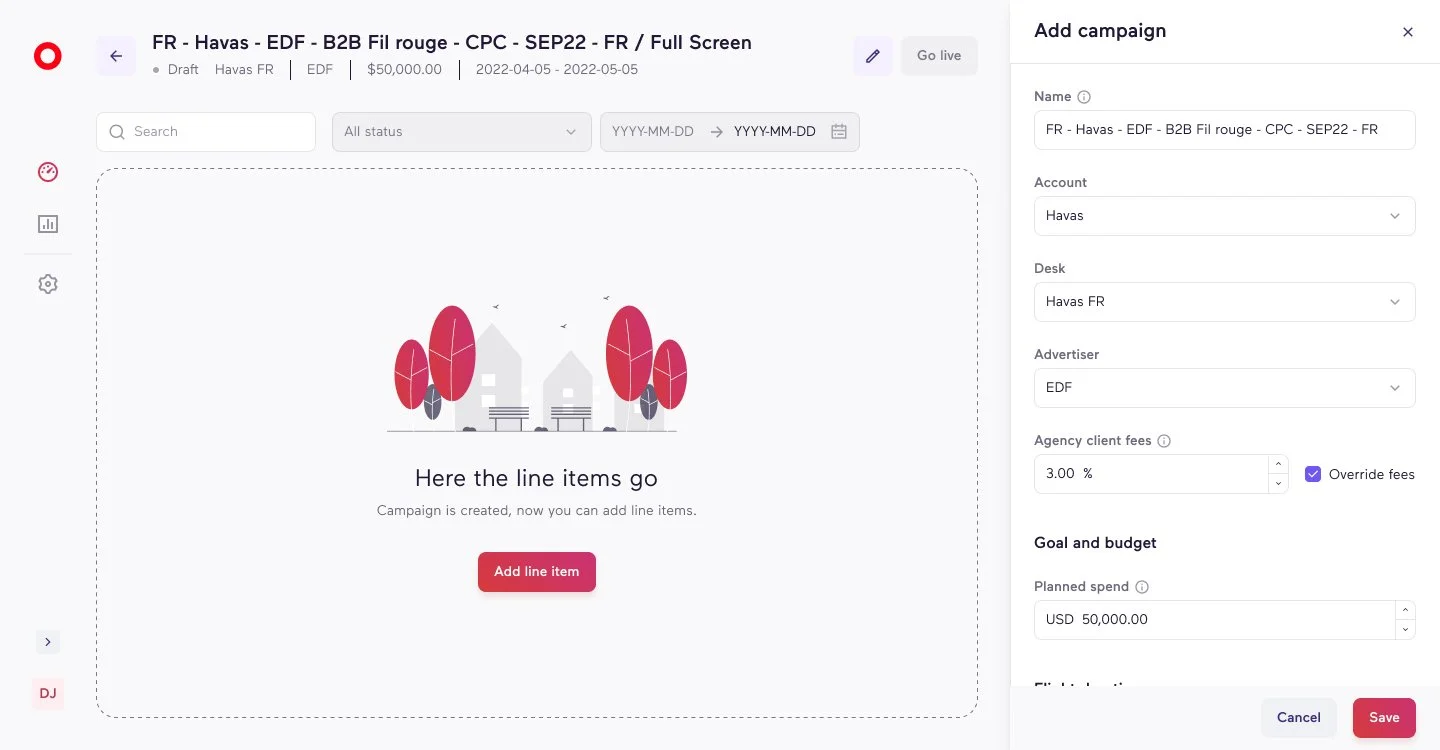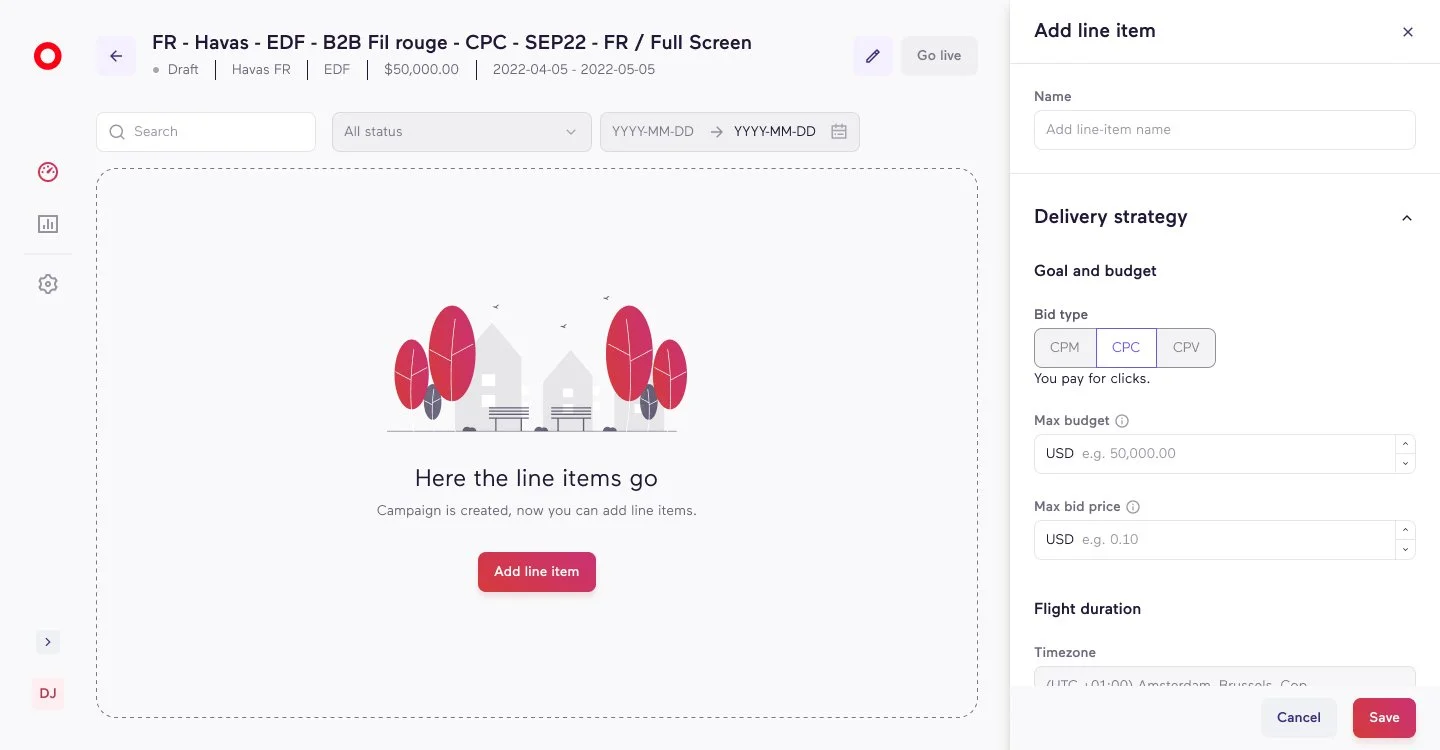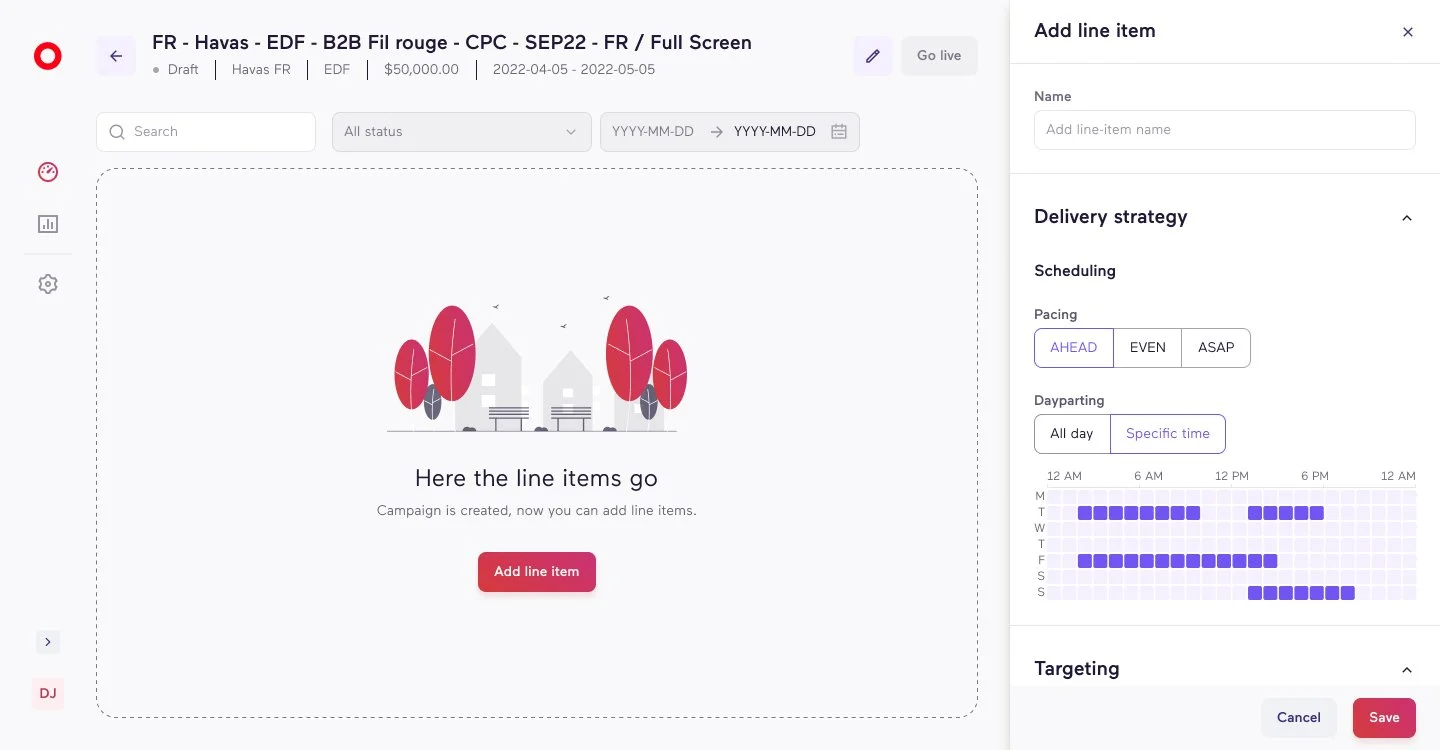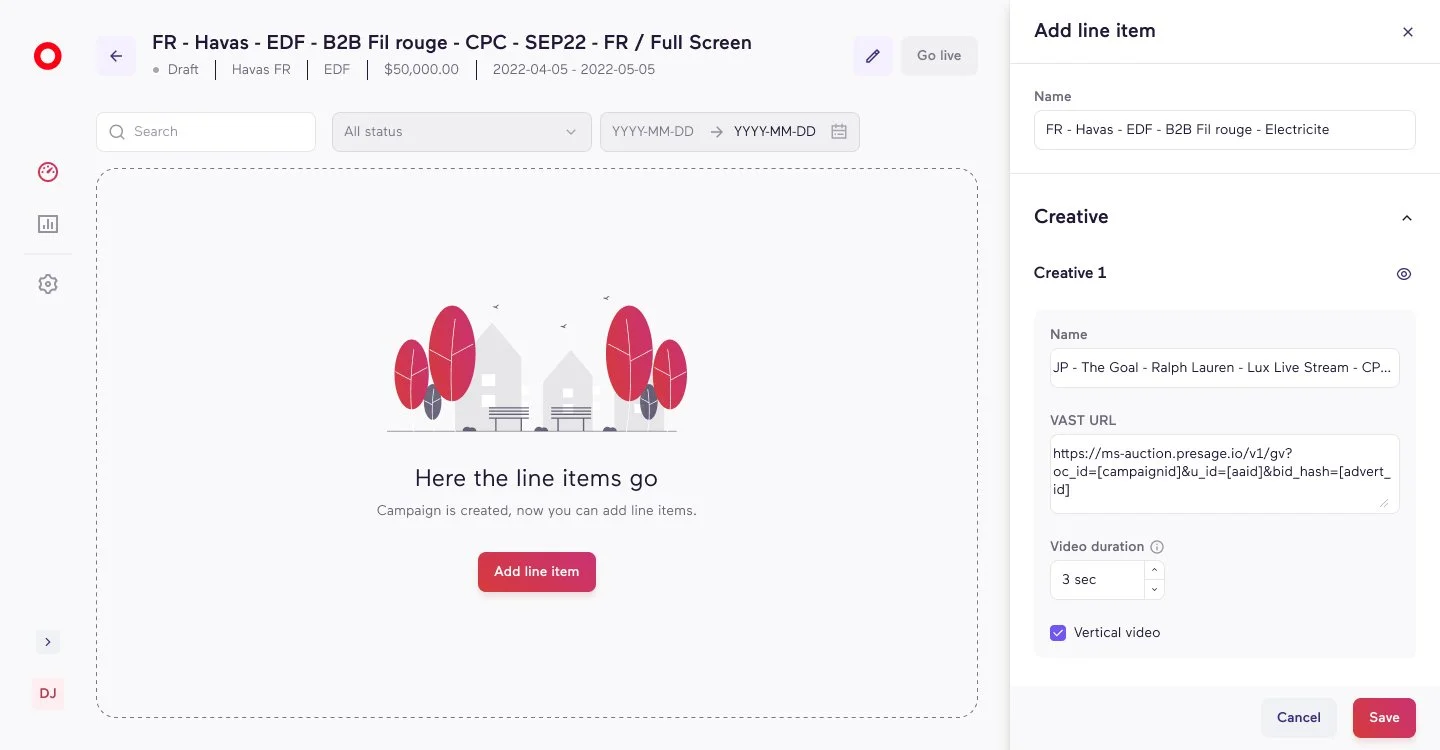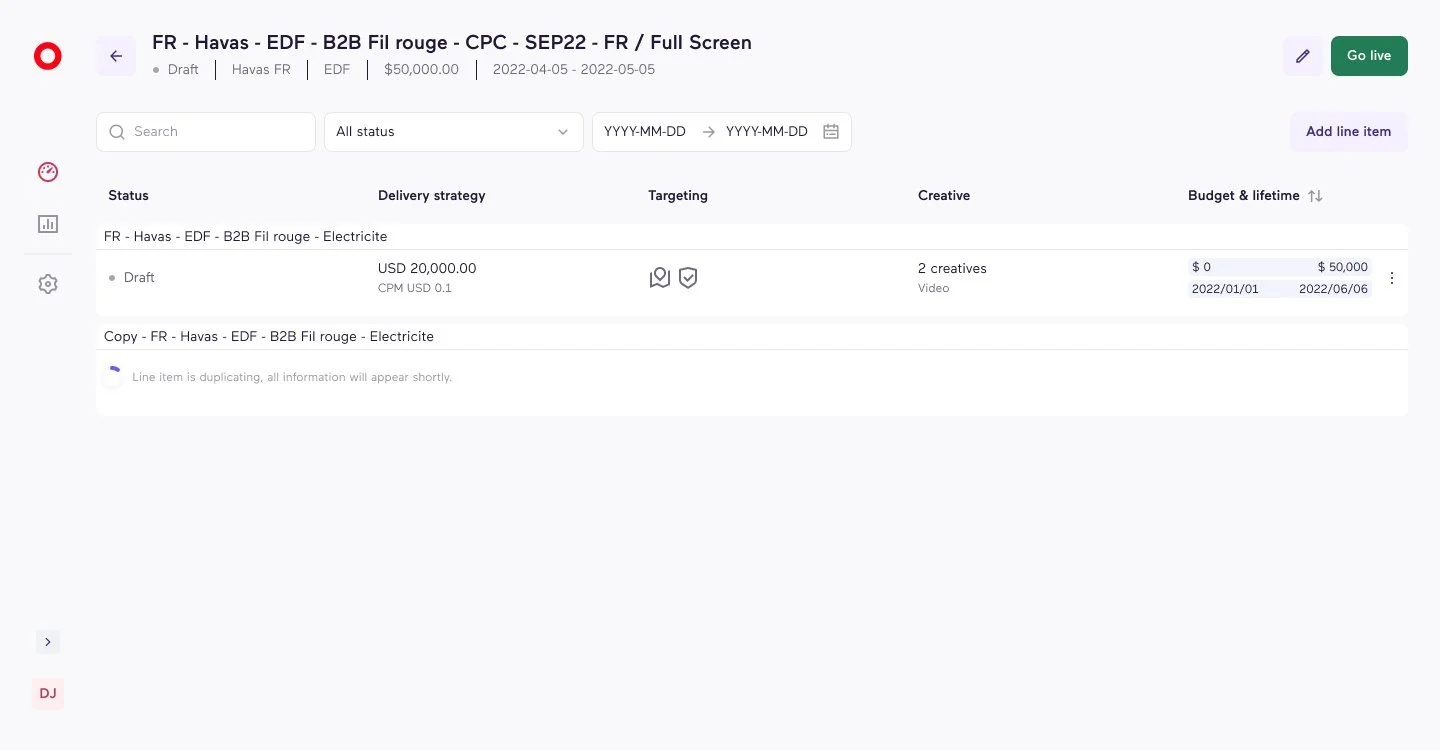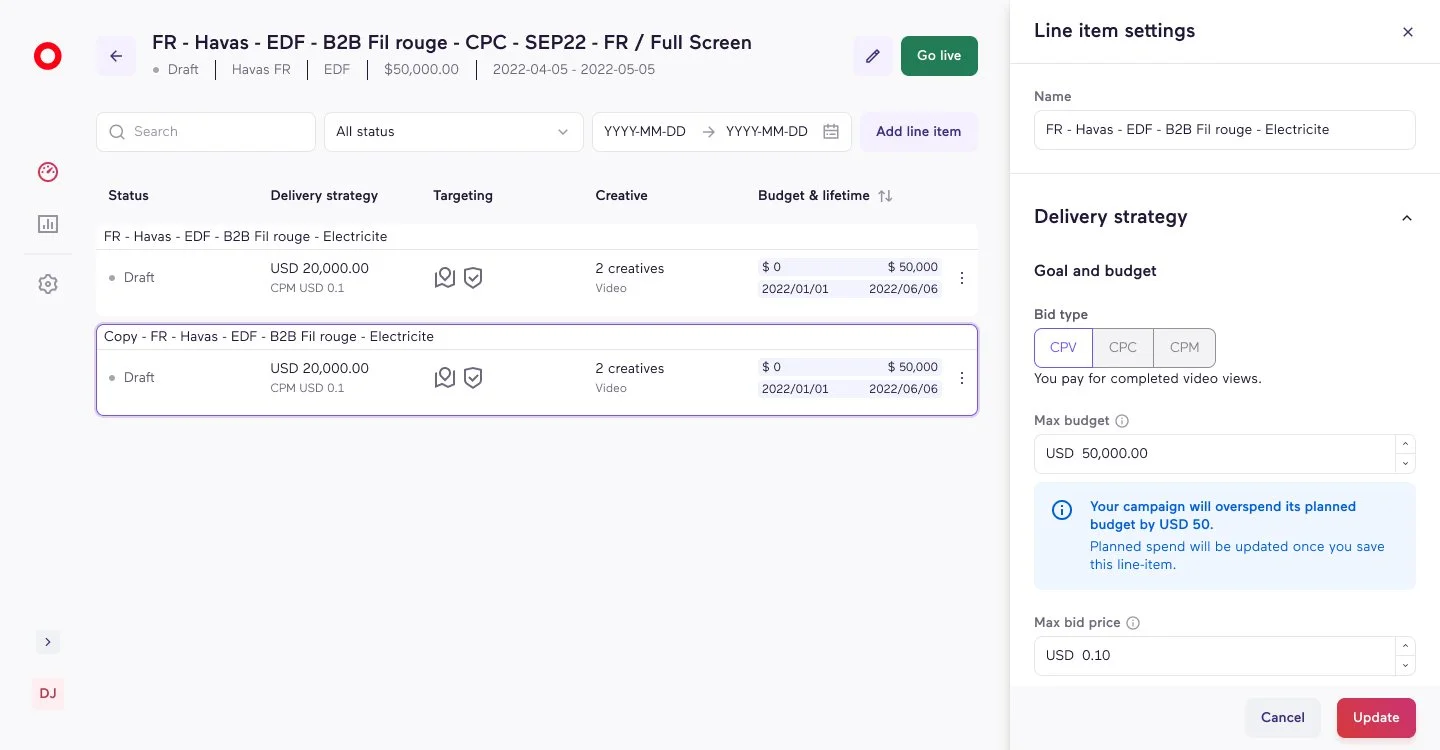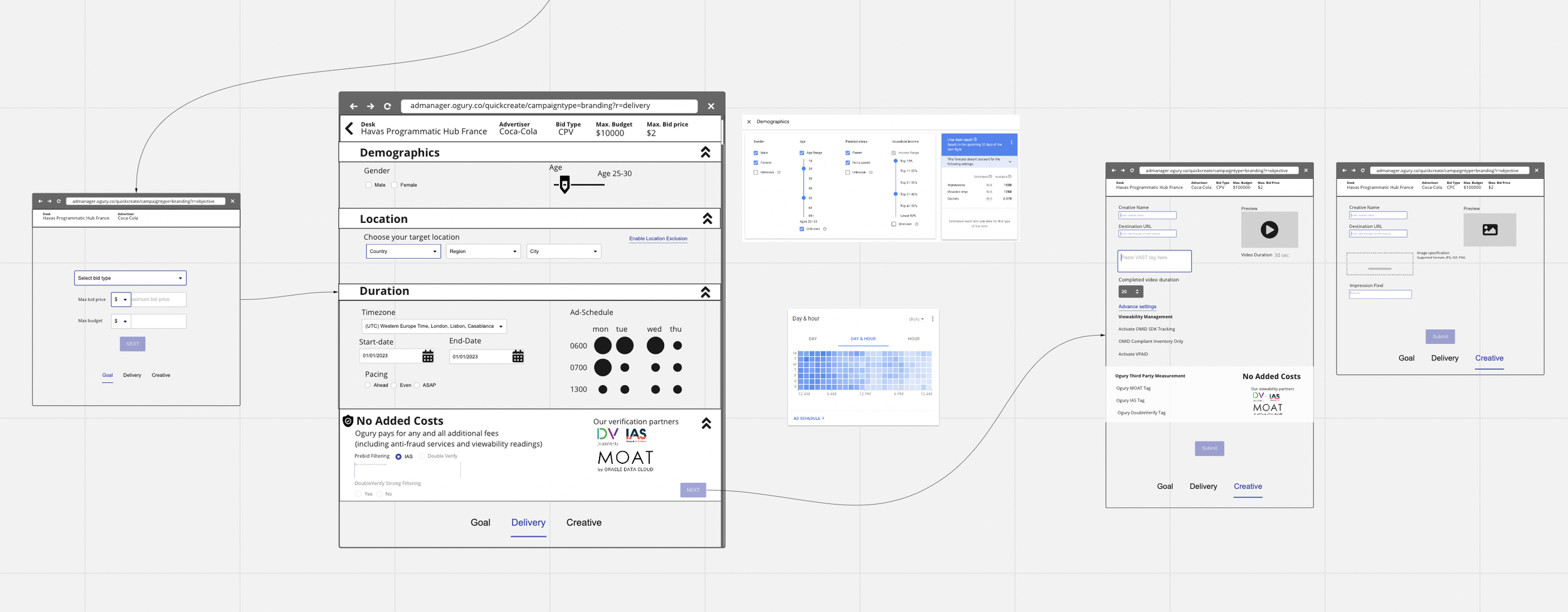Campaign creation flow
Ogury needed to launch a self-service campaign creation feature for external ad agencies within a single quarter.
The challenge: design an intuitive form flow for complex inputs (budget, dates, targeting, creatives) without direct access to end users, while aligning stakeholder expectations and managing technical constraints.
Company
Ogury
Team
1 product designer, 1 PM, 3 devellopers
Timeframe
2022 (1 month desing ideation, +2 month devellopement (cut into 3 phases))
Approach
Research & Benchmarking: conducted competitive analysis across Google Ads, Teads, LinkedIn, and TikTok to identify familiar patterns. Goal: reduce learning curve for users already managing campaigns across multiple platforms.
Constraint-Driven Design: evaluated three implementation approaches:
Template upload (fastest, least flexible)
Manual form entry (user-friendly, longer timeline)
Hybrid validation workflow (selected)
Chose manual forms to balance flexibility, timeline, and user experience.
Collaboration Framework: created a FigJam specification document as a single source of truth with the PM. This replaced scattered Confluence specs and prevented detail gaps that typically emerged during development. The shared space tracked all decisions, benchmarks, rejected solutions, and ongoing discussions.
Key Design Decisions
Drawer vs. Full-Screen Modal
Stakeholders (AdOps team) preferred drawers for context visibility while editing line items
Reduced development scope while maintaining functionality
Vertical Accordions for Long Forms
Line item form exceeded safe scrolling length, especially on smaller screens
Collapsible sections improved scannability and allowed users to see form structure at a glance
Leveraged existing design system components to accelerate delivery
Draft State Handling Late requirement: allow users to save incomplete campaigns. Challenged the initial PM/VP definition because it missed edge cases. Mapped all possible states and validation rules to prevent post-launch issues. This clarity prevented downstream bugs during manual review workflows.
Validation
Organized 4 moderated interviews with AdOps users (US, EMEA, APAC regions) using interactive prototypes. Key findings:
Regional targeting setup differed from initial spec (Northern Americas workflows revealed different mental model)
Draft state indicators weren't clear enough
Provided feedback to restructure location targeting approach
Moved mockups forward on the timeline to incorporate findings before handoff to development.
Delivery & Impact
Phased Approach : worked with tech lead to align mockups with three-stage implementation plan. Included detailed specifications, state transitions, and edge cases in each phase to minimize dev ambiguity.
Quality Outcome
Reduced back-and-forth iterations due to comprehensive specification work
Fewer bugs and QA cycles from upfront clarity on assumptions and edge cases
Team shipped 1.5–2 iterations before feature entered hold period (business reasons)
Team Impact
PM adopted FigJam collaboration model for future projects
Demonstrated value of design-led specification process over traditional documentation
Established pattern for handling scope creep and priority shifts under deadline pressure
Lessons
Specification clarity compounds: upfront investment in detail (edge cases, state definitions, flow charts) prevented rework and reduced developer friction far more than iterating mockups alone.
Collaborate on specs, not just designs: FigJam as a thinking tool—not presentation tool—forced conversations earlier and caught gaps before mockups.
User feedback redirects efficiently: even 4 interviews shifted direction on regional workflows. This feedback late in the cycle validated some decisions and challenged others—valuable signal despite not being statistically robust.
